Text



French 'Sabre a l'Orientale' cavalry officers' sword
The 'Sabre a l'Orientale' (often called mameluke swords in English) gained popularity with fashionable officers during the French campaign in Egypt and Syria (1798 to 1801).
Initially, these swords would have been acquired in battle either as a trophy, from being given as a token of respect by allies, or from a surrendering foe.
However, as the fashion spread throughout Europe, local sword makers and cutlers began to produce their own interpretations of the style, such as the regulation dress sabres of British Lancers.
This sword style remains in service today as the British 1831 Pattern General Officers sword and US Marine Corps Officer dress sword.

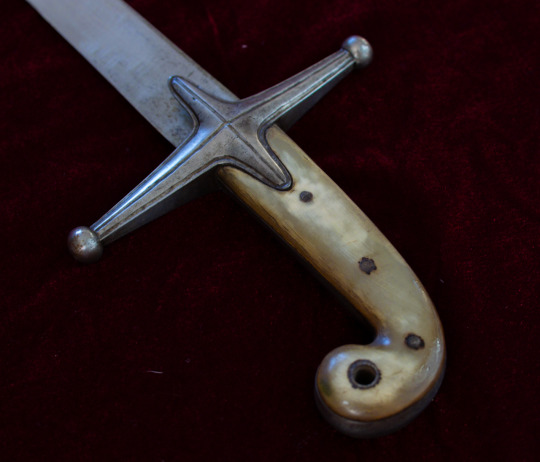
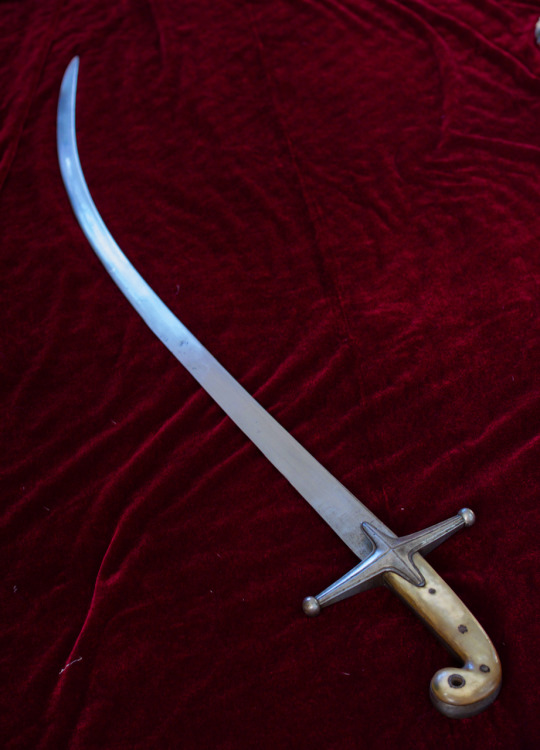
My sword likely dates from 1810 to 1830 and caught my interest because it features an Eastern-produced shamshir blade mounted in a European-made mameluke-style hilt with cow or buffalo horn grip scales. The sword is plain and functional without the ornamentation typically found on swords belonging to senior officers. Going by the style of scabbard drag, this sword originally belonged to a French cavalry officer.

Stats:
Overall Length - 950 mm
Blade Length - 805 mm
Curve - 75 mm
Point of Balance - 1730 mm
Grip Length - 125 mm
Inside Grip Length - 94 mm
Weight - 920 grams
90 notes
·
View notes
Text
I wish it didn’t, but incorrect swords, armour, uniforms, etc. breaks immersion for me and turns historical films and television into either fantasy, or sometimes makes it unwatchable.

This is.....niche. Do period-appropriate chickens even still exist? Idk anything about chickens. I like the fancy ones.
70K notes
·
View notes
Text

1908 Pattern Cavalry Sword of the 10th (Prince of Wales's Own) Royal Hussars from the British Empire dated to 1914 on display at Horsepower, The Museum Of The King's Royal Hussars in Winchester, England
Introduced in 1908 this pattern of cavalry sowrd was considered the most effective cavalry sword ever made, albeit during a time when swords had been becoming more obsolete in war. It was designed as a thrusting weapon, using the point of the sword to kill rather than the edge. During the First World War most soldiers painted the scabbard as a form of camoflage. Officers used a similar, more ornate sword, known as the 1912 Pattern Cavalry Sword.
This particular sword was used by Major Crichton of the 10th Hussars until he was wounded in 1915 on the Western Front. He opted to use a Troopers sword rather than an officers one, although the grip has been modified. Major Crichton was an Olympic Gold medalist for the mixed 6 metres sailing in the 1908 games.
Photographs taken by myself 2023
50 notes
·
View notes
Text

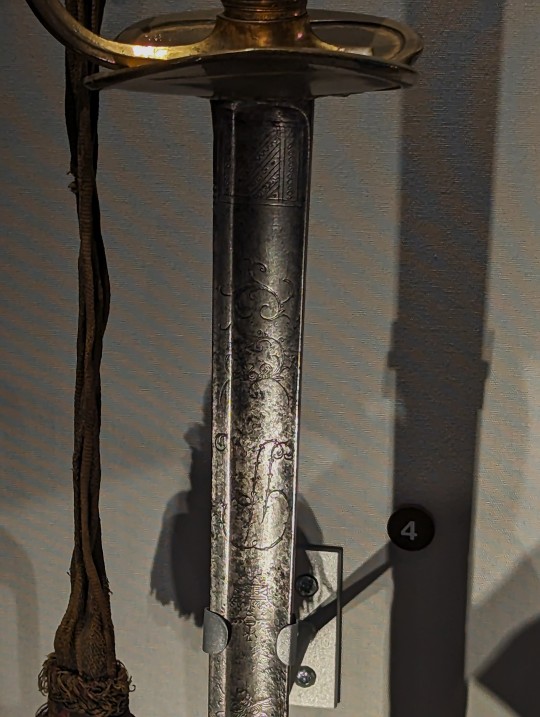

Infantry Officer's Small Sword from Germany dated to 1796 on display at the Cumbria Museum of Military Life in Carlise, England
Until 1786 there was little regulation on what swords officers in the British army carried. After that they introduced regular patterns for regiments and officers to use. Small swords like this were more a symbol of authority and rank on the battlefield and on parade unlike cavalry swords which were more in use in combat.
Photographs taken by myself 2023
135 notes
·
View notes
Link
1K notes
·
View notes
Photo

French Masonic Style Sword, 19th Century
Both sides of the blade are ridged and slightly wavy with one side etched with manufacturer inscription on the ricasso “Rouland Klingenthal France”. Gilded (somewhat worn) brass guard with crossed bones, skull on the pommel and horn grip. Length 97.5 cm.
1K notes
·
View notes
Photo

Masonic dagger, French, mid to late 19th century.
from Czerny’s International Auction House
3K notes
·
View notes
Photo
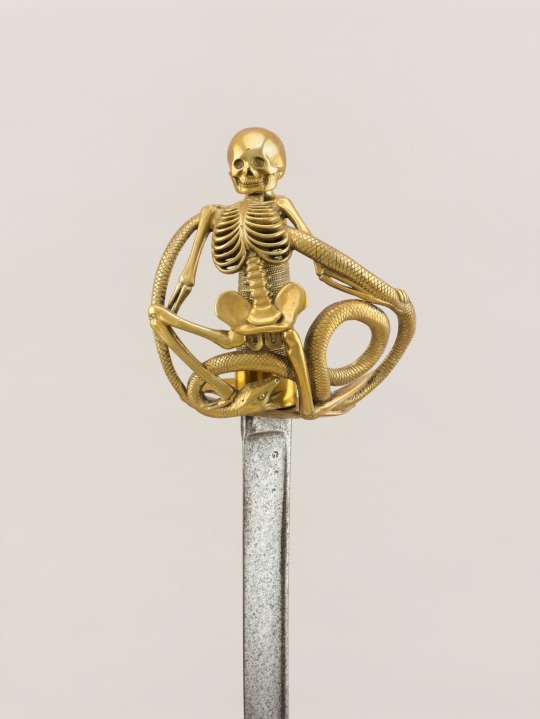
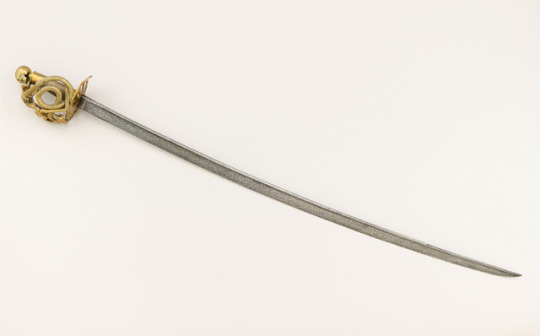
The nineteenth century, this sword was made from a light cavalry saber blade model 1816. The guard represents a skeleton, whose skull serves as a pommel and the body grows on the guard, fighting against a snake.
7K notes
·
View notes
Photo
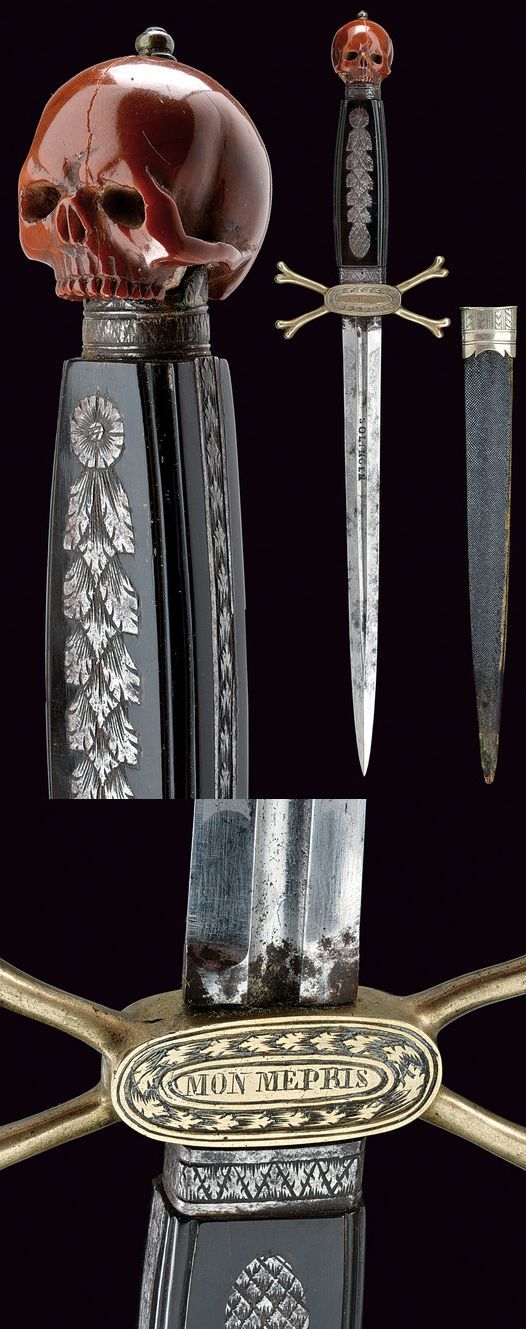
A masonic dagger. provenance: Italy dating: 19th Century.
6K notes
·
View notes
Photo



European Sword Cane / Sword Stick, 19th Century
A 19th century, possibly Masonic, sword stick. Featuring a blackened brass or bronze skull head and four-sided hollow-ground dagger blade of 16 ½ inches (42cm). Stick carved to represent bamboo.
914 notes
·
View notes
Text

Masonic dagger, 17th century, Italy. Thin, straight blade of lozenge section, the base chiselled with foliage; quillon shaped as bones, a skull above, the pommel chiselled with masonic symbols ; grip covered with iron wire binding and moor’s heads. Lenght 26 cm
802 notes
·
View notes
Photo

A Masonic Stylet, Italy, ca. 18th/19th century, from Czerny’s International Auction House.
1K notes
·
View notes
Text
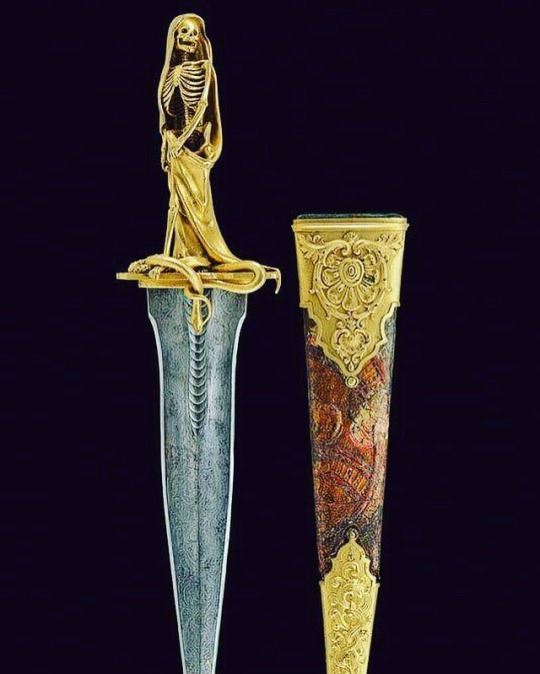
Dagger (42.5 cm) with skeleton/death hilt, France 19th century
4K notes
·
View notes
Text


1796 Heavy cavalry troopers sword by Dawes in original configuration (although the grip leather has been replaced).
When Major John Gaspard Le Marchant, proposed his new cavalry sabre design with his system of mounted swordsmanship; his intention was for his new sabre to be the universal sabre for the British cavalry (a concept that was 60 years ahead of it's time).
And while his sword was accepted as the 1796 Pattern light cavalry sabre, the officers of the heavy cavalry insisted on a straight bladed design. Falling back on his experiences with the Austrian cavalry in the Low Countries campaign (1793-95) he suggested a sword that was an almost direct copy of their model 1769 pallasch.



While an effective cutting sword, the hatchet tip of the 1796 HC, was not suitable for thrusting and in service these were often re-profiled to have a spear tip. Other changes included removing the langets and narrowing the guard on the inside to prevent wear on the uniform while wearing.
Like it's light cavalry counterpart, the 1796 Pattern sword was also exported to Britain's allies; Portugal and Sweden during the Napoleonic wars.


139 notes
·
View notes
Text

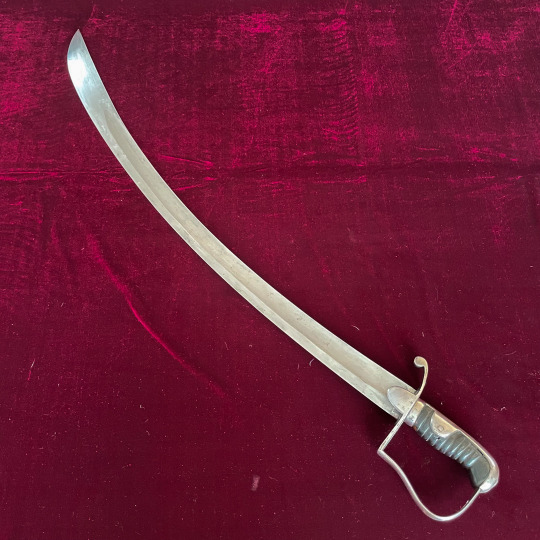
Dutch m1813 No.1 light cavalry troopers sabre.
While initially supplied with English made 1796 Pattern light cavalry sabres in the late months of 1813, the Dutch Army procured a further 3,800 sabres from different Solingen manufacturers between 1814 and 1819.
The m1813 No. had a long service life, being issued to the Light Dragoons, Hussars, Lancers and the East Indian Cavalry. Even when it was replaced in 1829 with the No.3 light cavalry sabre, many were re-issued to the 'Jagers te Paard' and second line units.
They likely remained in service until the late 1830s early '40s when the remaining stocks were inspected and put into storage at the Artillery depot in Brielle. In 1880 hundreds of out of service swords were transferred to the Rijksmuseum and put on display in the Waterloo hall.
While there are visual differences between the Prussian m1811 Blucher sabre, itself a copy of the 1796 Pattern, the Solingen produced m1813 No.1's are visually identical to British made sabres, and can only be identified by their Dutch control stamps and the absence of British ones.
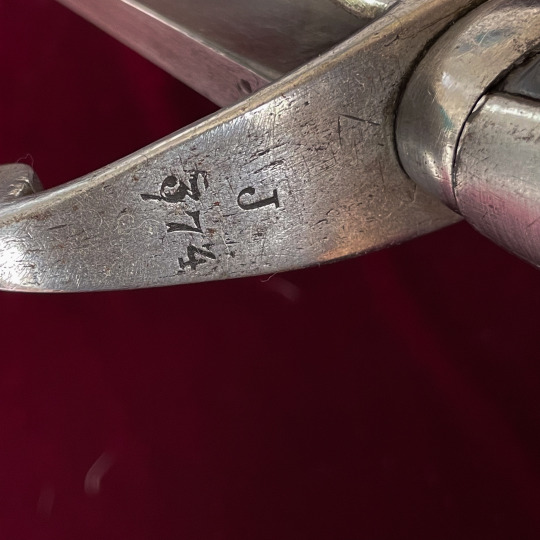

This sabre was one of the swords re-issued to the Jagers te Paard (hunters on horse) as can be seen by the serial number on the quillon which appears to have over-stamped an earlier mark. The blade is dated 1833 on the ricasso and the spine has an *L inspectors stamp, probably belonging to P. Libert who, from 1831 was the controller edged weapons, until retirement in 1840.
This 1833 date likely means that the sabre was given a replacement blade supplied by an arms maker from Liege.


The Crown over V stamp belonged to A van Deventer, who was seconded in Solingen 1837-1839 then stationed at the Inspection HQ in Delft 1843-1845
The Crown over JP stamp is believed to have belonged to the Controller Jean Joseph.
The last two photos show the m1813 No.1 next to a 1796 Pattern LC made by Thomas Gill between 1796 and 1800. The Gill sword was likely a private contract for a Yeomanry troop since there are no ordnance board proof stamps on the blade.
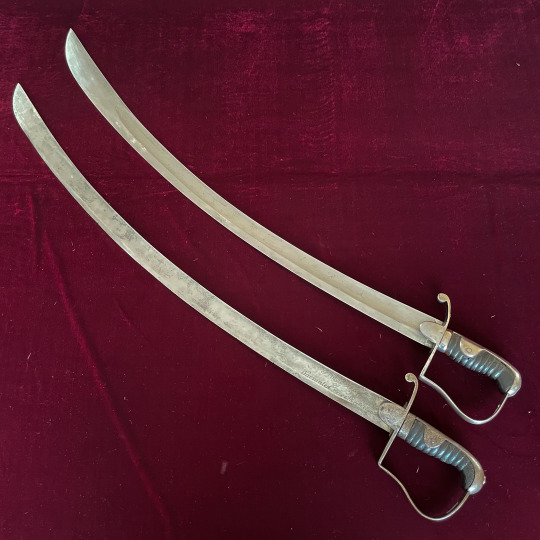

The tip of the m1813 No.1 is noticeably broader than the 1796 Pattern LC. This results in the sword having a 21 cm point of balance vs 16.5 cm on the 1796.
If you look closely at the edge of the 1796, you can see that it is slightly concave. This is evidence of damage in service that has been repaired. The chips that are also visible and commonly seen on other blades are more likely to have been caused by careless owners after they were sold out of service.
62 notes
·
View notes
Text
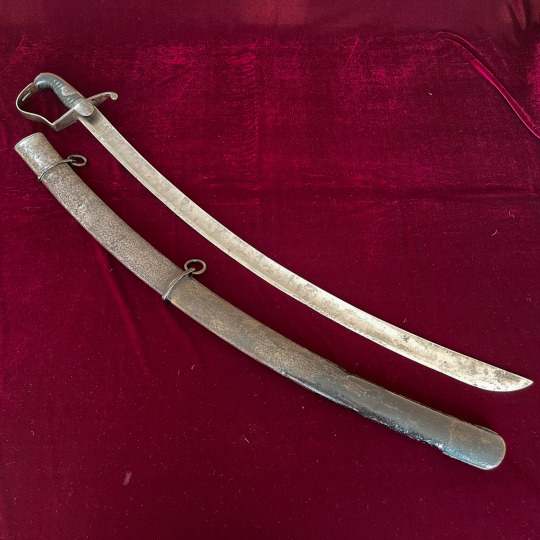


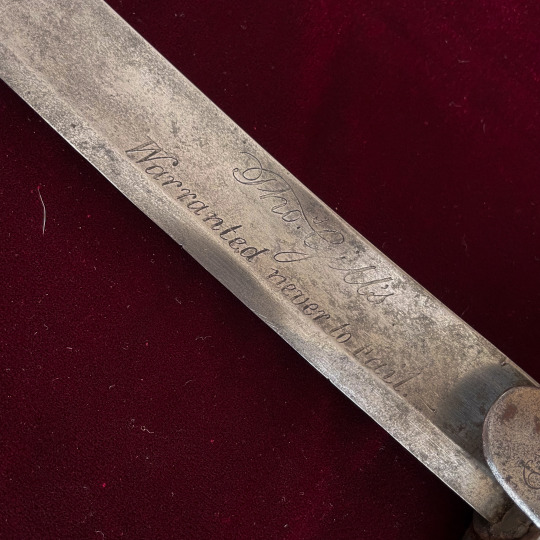

1796 Pattern light cavalry troopers sabre by Thomas Gill, circa 1796 - 1801.
111 notes
·
View notes
